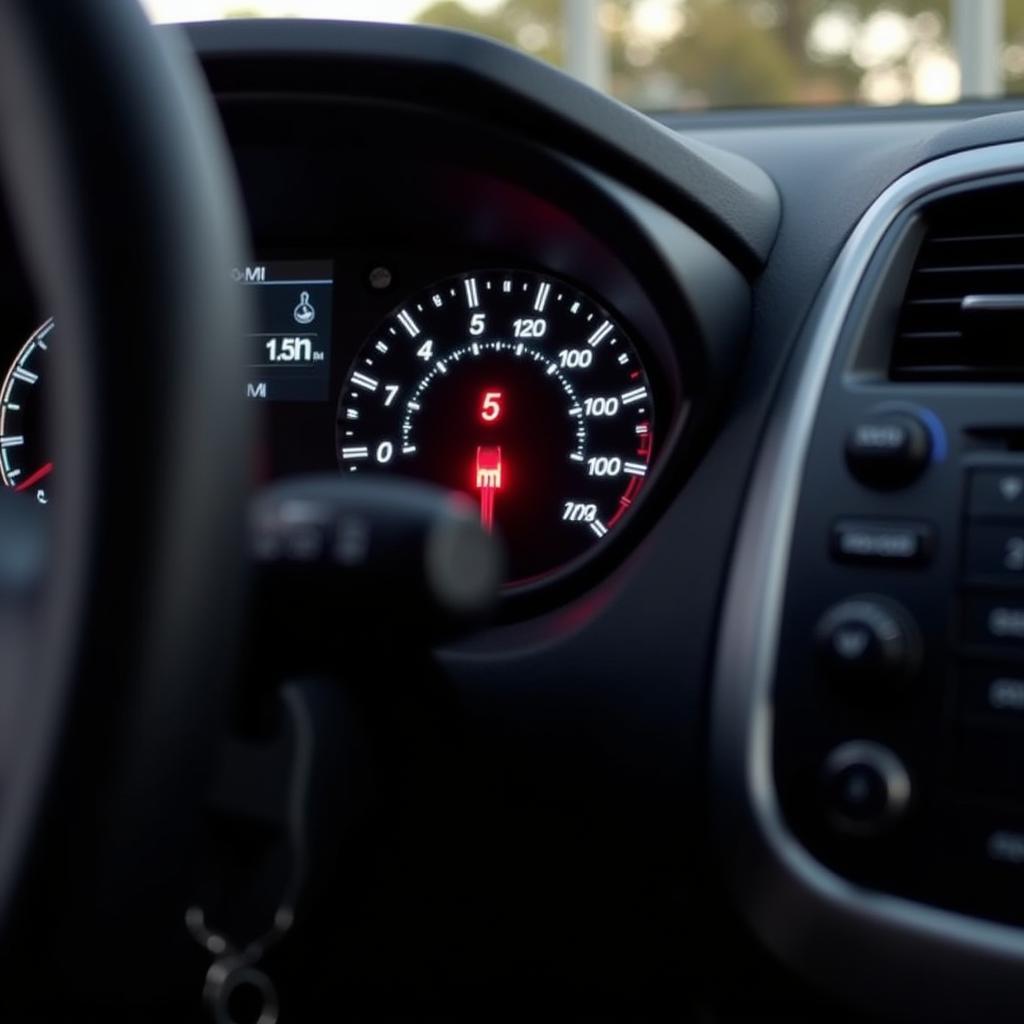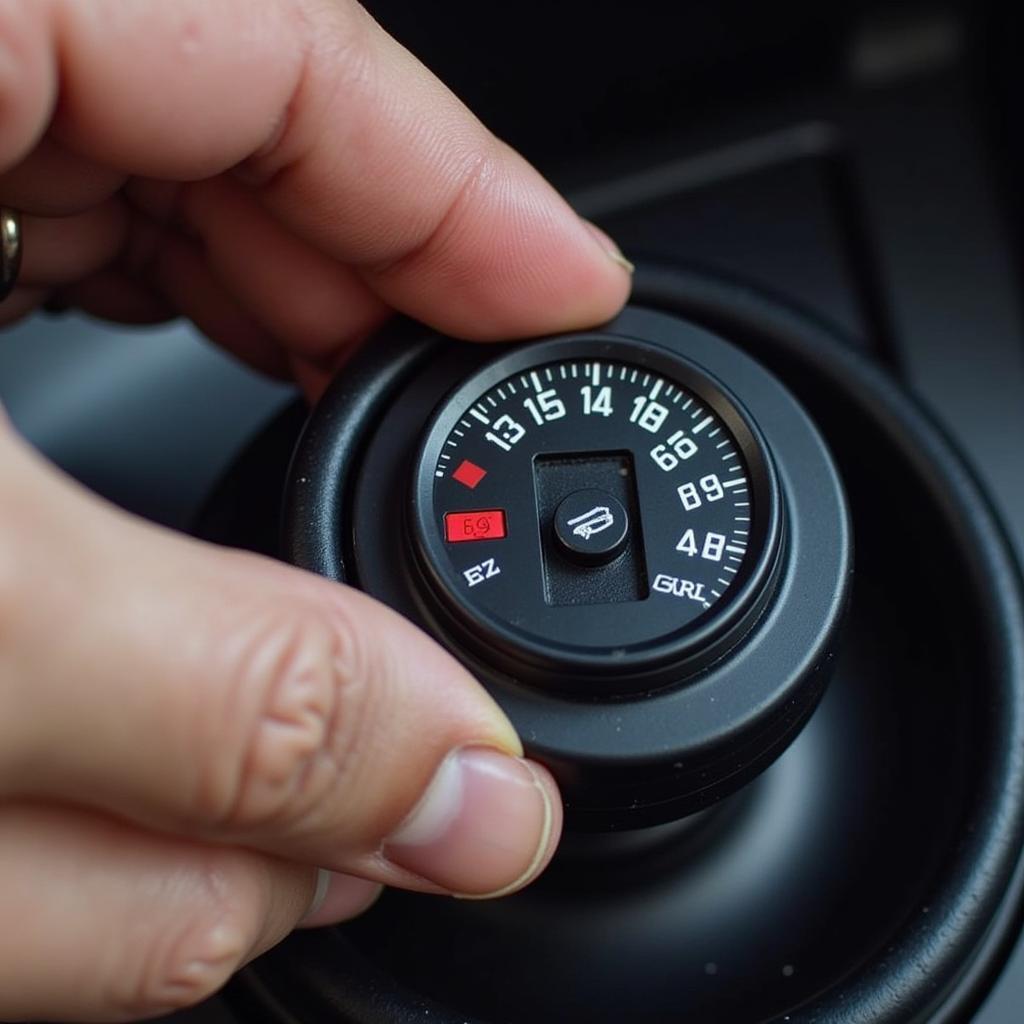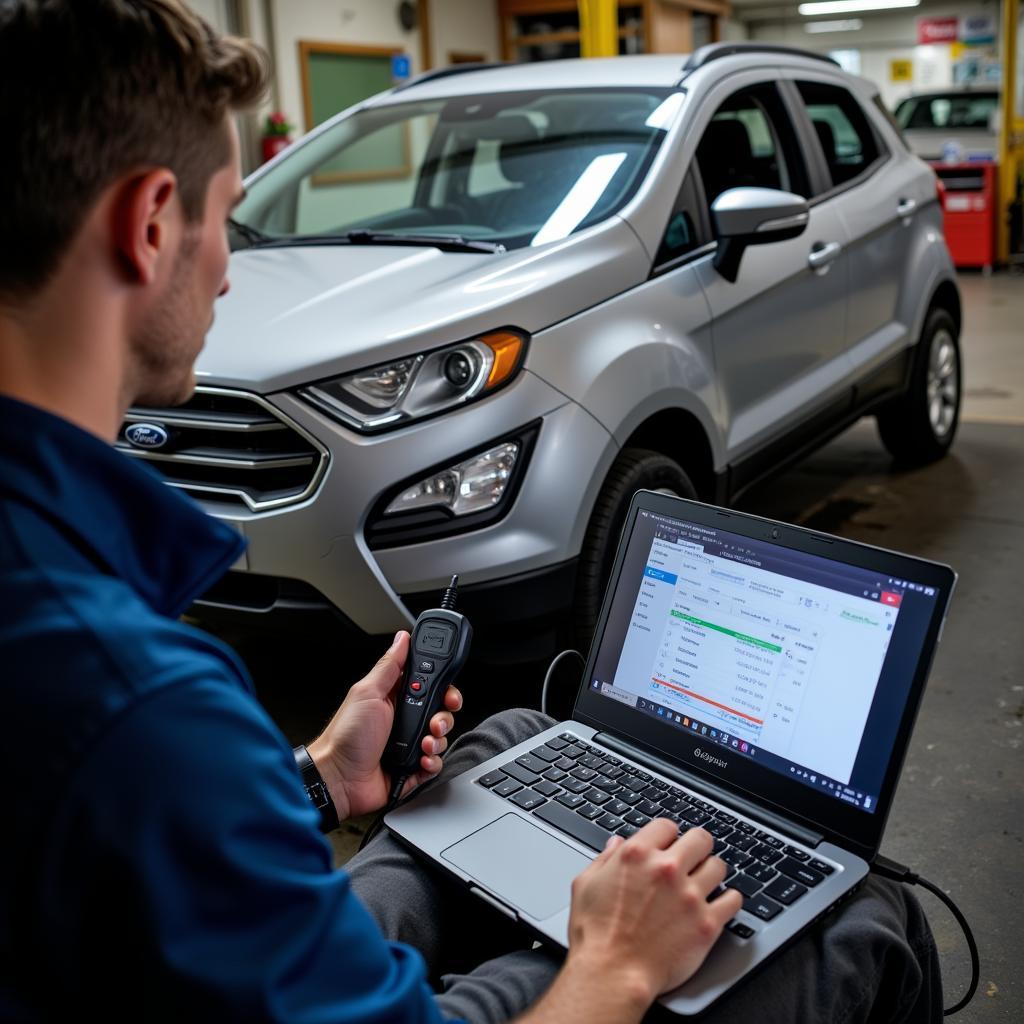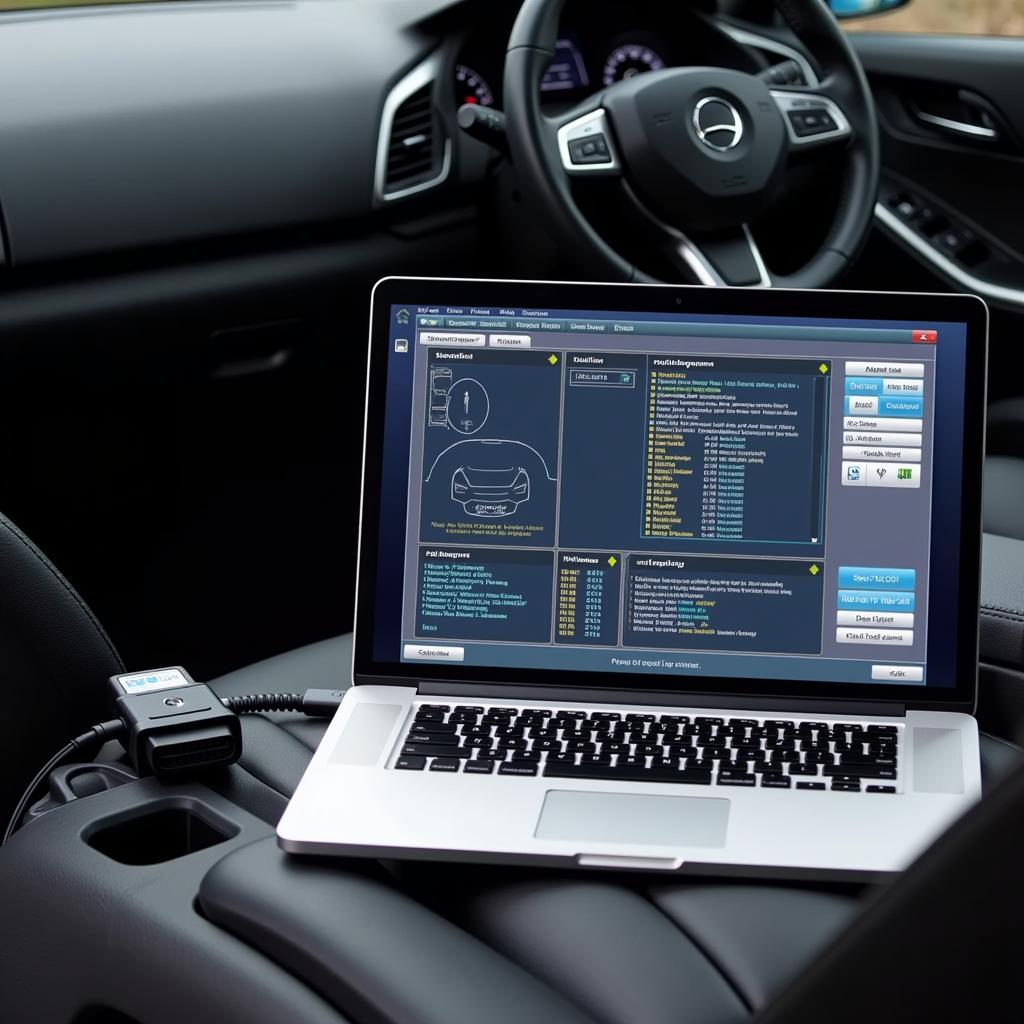The emergency brake hazard warning in your Ford EcoSport can be a frustrating and potentially dangerous issue. This article provides a comprehensive guide to understanding, diagnosing, and resolving this problem, covering everything from simple checks to more advanced diagnostic techniques and remote software solutions.
Understanding the Emergency Brake Hazard Warning
The emergency brake hazard warning light illuminates on your dashboard when the parking brake is engaged. However, if the light stays on even after releasing the brake, or flickers intermittently, it indicates a potential problem that needs attention. Ignoring this warning can lead to reduced braking performance, increased wear and tear on brake components, and even safety hazards.
What causes this warning to appear when it shouldn’t? Several factors can contribute, ranging from a simple faulty switch to more complex issues within the braking system. Let’s explore some of the common culprits.
Common Causes of the Emergency Brake Hazard Warning
-
Low Brake Fluid: One of the most frequent causes is low brake fluid. The brake fluid level sensor triggers the warning light when the fluid drops below a safe level. This can be due to leaks in the brake lines, worn brake pads, or simply needing a top-up.
-
Faulty Parking Brake Switch: The switch that detects the position of the parking brake can malfunction, sending incorrect signals to the car’s computer and illuminating the warning light.
-
Worn Brake Pads: As brake pads wear down, the brake fluid level in the reservoir decreases. This can trigger the low brake fluid warning, which is often linked to the emergency brake hazard warning.
-
ABS Issues: Problems within the Anti-lock Braking System (ABS) can also trigger the emergency brake hazard warning. This could be due to a faulty ABS sensor, module, or wiring.
 Ford EcoSport Emergency Brake Warning Light on Dashboard
Ford EcoSport Emergency Brake Warning Light on Dashboard
Diagnosing the Problem
Diagnosing the root cause of the emergency brake hazard warning requires a systematic approach. Start with the simplest checks and progress to more complex ones.
-
Check Brake Fluid Level: Open the hood and locate the brake fluid reservoir. Check the fluid level against the minimum and maximum markings. If it’s low, top it up with the correct brake fluid specified in your owner’s manual.
-
Inspect Parking Brake Lever and Cable: Check the parking brake lever for proper operation. Ensure it engages and disengages smoothly. Also, inspect the parking brake cable for any signs of damage or fraying.
-
Test the Parking Brake Switch: A multimeter can be used to test the parking brake switch for continuity. Consult your vehicle’s wiring diagram for the correct procedure.
 Checking Brake Fluid Level in a Ford EcoSport
Checking Brake Fluid Level in a Ford EcoSport
Remote Software Solutions and Programming
In some cases, the emergency brake hazard warning might be caused by a software glitch within the car’s electronic control unit (ECU). Remote software solutions and programming can be used to diagnose and rectify these issues. This involves connecting the vehicle to a diagnostic tool and accessing the ECU remotely to check for error codes, update software, and perform calibrations.
“Remote diagnostics and programming are becoming increasingly crucial in modern vehicle repair,” says John Miller, Senior Automotive Diagnostic Technician at Advanced Auto Solutions. “They allow us to address software-related issues quickly and efficiently, often without the need for extensive physical disassembly.”
Resolving the Issue
Once you’ve identified the cause of the problem, you can take appropriate action to resolve it. This might involve topping up brake fluid, replacing a faulty switch, repairing brake lines, or addressing issues with the ABS system. If the problem is software-related, remote programming and updates can often provide a quick and effective solution.
“Remember,” advises Maria Sanchez, Lead Automotive Engineer at Global Auto Technologies, “addressing brake-related issues promptly is crucial for safety. Ignoring warning lights can lead to more serious problems down the line.”
 Remote Diagnostics on a Ford EcoSport
Remote Diagnostics on a Ford EcoSport
Conclusion
The emergency brake hazard warning in your Ford EcoSport should never be ignored. By understanding the potential causes and following a systematic diagnostic approach, you can quickly identify and resolve the issue, ensuring your safety and the proper functioning of your vehicle’s braking system. Don’t hesitate to seek professional assistance if you’re unsure about any step of the process.
FAQ
-
What should I do if the emergency brake hazard warning light stays on after releasing the parking brake? Check the brake fluid level first. If it’s low, top it up. If the problem persists, consult a mechanic.
-
Can worn brake pads trigger the emergency brake hazard warning? Yes, worn brake pads can cause the brake fluid level to drop, which can activate the warning light.
-
How can remote software solutions help with the emergency brake hazard warning? Remote software can diagnose and fix software glitches in the car’s ECU that may be causing the warning light.
-
Is it safe to drive with the emergency brake hazard warning light on? It’s not advisable. The warning light indicates a potential problem with the braking system, which could compromise safety.
-
What are the common causes of a faulty parking brake switch? Wear and tear, corrosion, or physical damage can cause a parking brake switch to malfunction.
-
How often should I check my brake fluid level? It’s recommended to check your brake fluid level at least once a month.
-
Where can I find information about my Ford EcoSport’s braking system? Your owner’s manual provides detailed information about your vehicle’s braking system and maintenance schedule.

